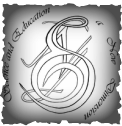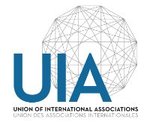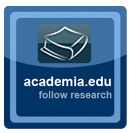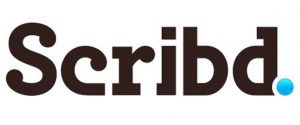Science and Education a New Dimension
Iss. 242. 2020.
I. O. Mashchenko Script material of the dramaturgical basis of the mass theatric event: search, script fixation, stage performance
https://doi.org/10.31174/SEND-HS2020-242VIII42-01
The aim of the article is to study the peculiarities of the use of script material in the dramatic basis of a theatrical event. To do this, it is necessary to consider the types of script material; to analyze the main options of finding script material and its script modification; to reveal the variability of the script material in the dramatic basis of the future theatrical spectacle and its stage performance. Research methodology of the study is to apply an interdisciplinary approach involving hermeneutic, semiotic, comparative methods. Results. The Varieties of material for the dramatic basis of the future theatrical event should be considered as literary, documentary and visual material. Pre-determining of the topic, idea and overriding task contributes to a more rapid search of the script material and its stage representation as a means of creating the artistic idea of the future event. The script material in the script version is fixed through text/word (dialogue, monologue) or remarks (author’s notes), and on the stage through the construction of an associative and symbolic idea. Novelty. The stage creating of the script material performance on the examples of different episodes from directing of mass events in Kharkiv is analyzed: the event of the national record of Ukraine (2018), the flash mob on the day of the Ukrainian Flag (2018), the solemn ceremony of congratulating educators of Kharkiv region on professional holiday – Day of education (2018). The practical significance. Educational materials can be used in lectures on scenario, stage directing and mass events, as well as in practical classes in creating mass theatrical events.
Keywords: script material, event, action, script, means of script fixation, stage performance.
I. O. Mashchenko Script material of the dramaturgical basis of the mass theatric event: search, script fixation, stage performance
M. Kh. Humennyi, V. Yu. Humenna The main ideological and aesthetic tendencies of the anti-war novel (A. Barbusse, E. Remarque, O. Gonchar)
https://doi.org/10.31174/SEND-HS2020-242VIII42-02
The article is devoted to the study of the main ideological and aesthetic tendencies in the anti-war novels of A. Barbusse, E. Remarque and O. Honchar. The peculiarities of the synthesis of pictures of war and peace as the dominant principle in the formation of the internal structure of novels are clarified. A new facet of the genre of the anti-war novel is traced through the comprehension of frontal and non-frontal problems. Particular attention is paid to the functions of exterior descriptions, saturated with metaphors, which have a central place in the lexical and semantic system of the language of novels. The dialectic of tragic and comic in the ideological and aesthetic system of genre specifics of novels is characterized. It is proved that laughter traditions contribute to a deeper understanding of the main ideological and artistic trends in the development of the anti-war novel of the twentieth century.
Keywords: exterior descriptions, compositional reception, dominant idea, multifacetedness, dialogue-monologue speech.
M. Kh. Humennyi, V. Yu. Humenna The main ideological and aesthetic tendencies of the anti-war novel (A. Barbusse, E. Remarque, O. Gonchar)
Y. Lehkobyt Linguistics and paralinguistics in the context of Internet communication
https://doi.org/10.31174/SEND-HS2020-242VIII42-03
Abstract. The article considers the linguistic and paralinguistic features of Internet communication as the newest form of communication. The publication considers word-forming, morphological, lexical, grammatical, orthographic language levels and their features in the conditions of Internet communication. Paralinguistic characteristics of Internet communication are presented in the article on the basis of graphic elements, which include, first of all, emojis or “smilies” as a way of expressing emotions by non-verbal means without the ability of interlocutors to see each other directly in communication.
Keywords: linguistics, paralinguistics, internet communication, electronic communication, emoji.
Y. Lehkobyt Linguistics and paralinguistics in the context of Internet communication
V. V. Lykina Verbalization of concepts and anticoncepts in public speeches (based on the speech by Gordon Brown)
https://doi.org/10.31174/SEND-HS2020-242VIII42-04
Abstract. Based on the analysis of the speech by former British Prime Minister Gordon Brown delivered at the Labour conference on 23 September 2008, the article reveals the peculiarities of verbalizing aspects of the concept of DEMOCRACY and its anticoncept with the use of the theory of force dynamics, which takes into account the opposition of Agonist and Antagonist. It is established that in the perspective of verbalization of the concept of DEMOCRACY, the government, denoted in the speech by the noun ‘government’, is depicted as an Agonist with a tendency to movement, and the British nation denoted by the noun ‘people’ are associated with the Antagonist with a tendency to rest. The analysis of the speech proves that the opposition of the Agonist, with whom the concept is correlated, and the Antagonist, with whom the anticoncept correlates, takes place on two levels: on the basic, which is reflected in the opposition of government and people, and on the general, when the concept of the nation, that unites government with the people, contrasts with the challenges of today as a counter-concept.
Keywords: concept, anticoncept, theory of force dynamics, Agonist, Antagonist.
V. V. Lykina Verbalization of concepts and anticoncepts in public speeches (based on the speech by Gordon Brown)
M. Lysak Metaphorical and metonymic basis for the formation of the compound nouns with a somatic component in German mass media
https://doi.org/10.31174/SEND-HS2020-242VIII42-05
Abstract. The article investigates the means of metaphorical, metonymic and metaphthonymic transferences, on the basis of which compound nouns with a somatic component (CNSC) are formed in German mass media texts. It determines the types of metaphor and metonymy present in the studied mass media microcontexts, establishes the frequency of their use; highlights the influence of CNSC on the creation of vivid imagery in the mass media (the pragmatic effect of such articles is studied, their manipulative influence on the reader is revealed).
Keywords: compound noun, somatic component, metaphor, metonymy, mass media, semantics, pragmatic effect.
M. Lysak Metaphorical and metonymic basis for the formation of the compound nouns with a somatic component in German mass media
A. M. Mollaakhmadi Dekhahi Intercultural Dialogue of Religions: Islamic and Christian in the Novel by Simin Daneshvar “Mourners of Siyâvash” (“Sa- vushun (نوشووس)”)
https://doi.org/10.31174/SEND-HS2020-242VIII42-06
Abstract. Religious and philosophical aspects of the novel “Mourners of Siyâvash” (“Savushun”) of the modern Iranian writer Simin Daneshvar are represented. The novel is dedicated to turning points in modern history and it is still relevant for modern society since it assumes a dialogue between Islamic and Christian religions. The use of Islamic religious texts from the Quran in the novel and their interaction with Christian ones is investigated. Peculiarities of interpretation and creative transformation of religious texts by S. Daneshvar, as well as the complexity of their translation are explored.
Keywords: Islam, Shiites, Christianity, Iranian literature, epic novel.
A. M. Mollaakhmadi Dekhahi Intercultural Dialogue of Religions: Islamic and Christian in the Novel by Simin Daneshvar “Mourners of Siyâvash” (“Savushun (نوشووس)”)
O. G. Mykhailova Terminology of eye’s structure as the source of metaphorization
https://doi.org/10.31174/SEND-HS2020-242VIII42-07
Article suggests linguo-cognitive approach to the problem of terminology nomination in the field of Greek and Latin anatomic terminology, the metaphor was determined as the most productive way of forming the units of scientific language. Based on the examples for the nomination of eye’s structure, different sources of metaphorization were considered, namely: living and dead nature, artifacts, geographical system of coordinates. Linguistic and cultural analysis of Greek and Latin and Ukrainian ophthalmological terminology proved the presence of asymmetry in the linguistic representation of metaphorical models, wherein manifested by partial or complete replacement of the source of metaphorization, the appearance of metonymic instead of metaphorical meaning, the loss or neutralization of metaphorical meaning.
Keywords: metaphor, metonymy, sources of metaphorization, anatomical terminology, Latin.
O. G. Mykhailova Terminology of eye’s structure as the source of metaphorization
O. Khyzhniak, A. Zhovnir E-learning as a form of online scientific communication: opportunities and barriers in quarantine
https://doi.org/10.31174/SEND-HS2020-242VIII42-08
Abstract. The article considers the specifics of online scientific communications in quarantine. The author provided an analysis of e- learning as a space and form of scientific communication, outlined its specifics and features. The article analyzes the opportunities of e-learning that it provides for scientists who continue their work in a pandemic of coronavirus infection. In addition, the author identified the risks and obstacles of the electronic educational and scientific space, which today are noted by scientists to continue their effective functioning. Graphs based on the results of sociological research among scientists of Ukraine were provided. It was concluded that today there is a need to find clear explanations and the formation of unified tools for organizing work and building communication processes in new conditions.
Keywords: e-learning, scientific communications, online communications, cyberspace, digital environment.
O. Khyzhniak, A. Zhovnir E-learning as a form of online scientific communication: opportunities and barriers in quarantine
O. V. Plakhotnik, A. Y. Kuzmenko The development of theoretical and practical didactic fundamentals in the ukrainian school: sava chavdarov
https://doi.org/10.31174/SEND-HS2020-242VIII42-09
Abstract. The article deals with a prominent Ukrainian scientist, teacher, didactic specialist and methodologist Sava Khrystoforovych Chavdarov. In his textbooks S. Chavdarov makes an attempt to justify the system of language education in Ukrainian schools from the first to the tenth grade inclusively. As a methodologist, he outlined the principles of building a school grammar course in high school in the programs and textbooks, gave guidelines for their coverage.
Keywords: educational activity of S. Kh. Chvadarov, theory and practice of teaching, didactic heritage, improvement of forms and methods of teaching.
O. V. Plakhotnik, A. Y. Kuzmenko The development of theoretical and practical didactic fundamentals in the ukrainian school: sava chavdarov
А. А. Sender Consideration of cognitive styles as a method of solving the problem of intensification of professional training of future software engineers
https://doi.org/10.31174/SEND-HS2020-242VIII42-10
Abstract. The article considers the possibility of using the approach taking into account the cognitive aspect of the style of teaching students in information technology, in order to solve the problems of intensification of professional training. The main means of taking into account cognitive styles, the author notes the testing of students to determine their psychological characteristics and further individualization of the educational vector according to the results. According to the author, the results of testing students of III and IV courses of IT-specialties indicate a tendency of predominance of synthetic methods of information processing.
Keywords: software engineer; quality of education; intensification; institution of higher education, analysis, cognitive styles.
А. А. Sender Consideration of cognitive styles as a method of solving the problem of intensification of professional training of future software engineers
I. V. Shevchenko, O. Kordyuk Implementation of CLIL methodology in teaching Practical English course for the 3rd year students of philological faculties at higher educational establishments of Ukraine in the conditions of distant and blended learning
https://doi.org/10.31174/SEND-HS2020-242VIII42-11
Abstract. Knowledge of a foreign language acquires fundamental and priority importance in today’s globalization. Possessing integrated communication skills that provide professional and business relationships between people from different countries is becoming an obvious necessity for future foreign language professionals. Accordingly, special attention is paid at the present stage to the CLIL technique known in the world and actively used for effective foreign language learning. The article is devoted to the problem of implementation of the methodology of content and language integrated learning (CLIL) in the process of studying the “Practical English Course” by 3rd year students of philological faculties of higher educational establishments of Ukraine with tests for inde- pendent work and self-control in blended and distant learning. Attention is paid to the effectiveness of testing and systematization of knowledge through this method during the study of the discipline. The purpose of the article is to highlight the main advantages of using the CLIL methodology in teaching the 3rd year students of the philological faculties of higher educational establishments of Ukraine in teaching the discipline “Practical English Course”. Emphasis is made on the effectiveness of the use of tests for independent work and self-control, which give students the opportunity to test their knowledge of English in a blended and distant learning. The research emphasizes that the use of the CLIL methodology increases the motivation of students to learn English, promotes the development of their mental abilities, purposeful acquisition of lexical units and grammar knowledge, which will be used in their future professional activities.
Keywords: content and language integrated learning, Practical English course, mixed learning, distant learning, future professional activity, test, independent work, self-control.
I. V. Shevchenko, O. Kordyuk Implementation of CLIL methodology in teaching Practical English course for the 3rd year students of philological faculties at higher educational establishments of Ukraine in the conditions of distant and blended learning
O. H. Shvets, N. H. Osmuk, Yu. V. Litsman Personality-oriented approach in the organization of distance learning of students
https://doi.org/10.31174/SEND-HS2020-242VIII42-12
Abstract. The highlights of theoretical foundations of the organization of distance learning using the educational platform Modle and the social network Edmodo are covered in the research. Attention is paid to the possibilities of these resources to provide student- centered learning. On the basis of the authors’ own experience, the advantages of each of the platforms are revealed in ensuring the variability of the paths of the cognitive process, organizing formal and informal communication, supporting and accompanying students in the learning process, increasing motivation for learning.
Keywords: distance learning of students, student-centered learning approach in teaching students of higher education institutions, education platform Moodle, social framing Edmodo.
O. H. Shvets, N. H. Osmuk, Yu. V. Litsman Personality-oriented approach in the organization of distance learning of students
M. Sofilkanych, V. Kobal Historiography of development of Transcarpathian extracurricular art education in the XX century
https://doi.org/10.31174/SEND-HS2020-242VIII42-13
Аnnotation. The article is devoted to the research of the actual problem of development of out – of – school art education of Transcarpathia in the XX century: preconditions of its origin and development. The author notes that the development of art education is closely linked with outstanding artists, whose life, studies and activities in the late nineteenth – twentieth centuries has ties with Transcarpathia, Hungary, Western Europe, namely: Adalbert Erdelyi, Yosyp Bokshai, Mihai Munkachi, Shymon Holloshi, Franz Heverdle, Gnat Roskovych, Julius Virag, Andor Nowak, Imre Reves, Andriy Kotska, Fedir Bakoniy, Vasyl Burch and others. Their activities of famous, talented artists laid a solid foundation for the further establishment and operation of out-of-school art education institutions, the first of which were «Public School of Drawing» (1927); studio of fine arts in Uzhhorod Palace of Pioneers (Zoltan Bakoniy, 1946). In the second half of the twentieth century children’s art schools with art departments were opened, in which teachers were mostly pupils and graduates of art education in Transcarpathia, who continued to develop the best artistic traditions founded by their teachers.
Keywords: out-of-school art education, aesthetic education, Transcarpathia, fine arts, Hungarian artists.
M. Sofilkanych, V. Kobal Historiography of development of Transcarpathian extracurricular art education in the XX century
O. Vasylchenko, V. Vertegel, V. Khrebtova, O. Murzina Pedagogical Conditions Related to the Formation of Professional Value Orientations of Law Students
https://doi.org/10.31174/SEND-HS2020-242VIII42-14
The article aims to examine the issue of the law students’ professional values and their formation in the system of higher education particularly in the Ukrainian context. The authors analyze the term “value orientations” as an important component of the structure of the individual and define law students’ professional value orientations and consider professional values’ formation of future lawyers as their personal development in real processes of their education at university. Professional self-identification, self- realization, and self-organization are defined as essential value orientations for future specialists.
Keywords: pedagogical condition, professional value orientations, professional self-identification, law students, value-forming component, academic material of value oriented character.
O. Vasylchenko, V. Vertegel, V. Khrebtova, O. Murzina Pedagogical Conditions Related to the Formation of Professional Value Orientations of Law Students







